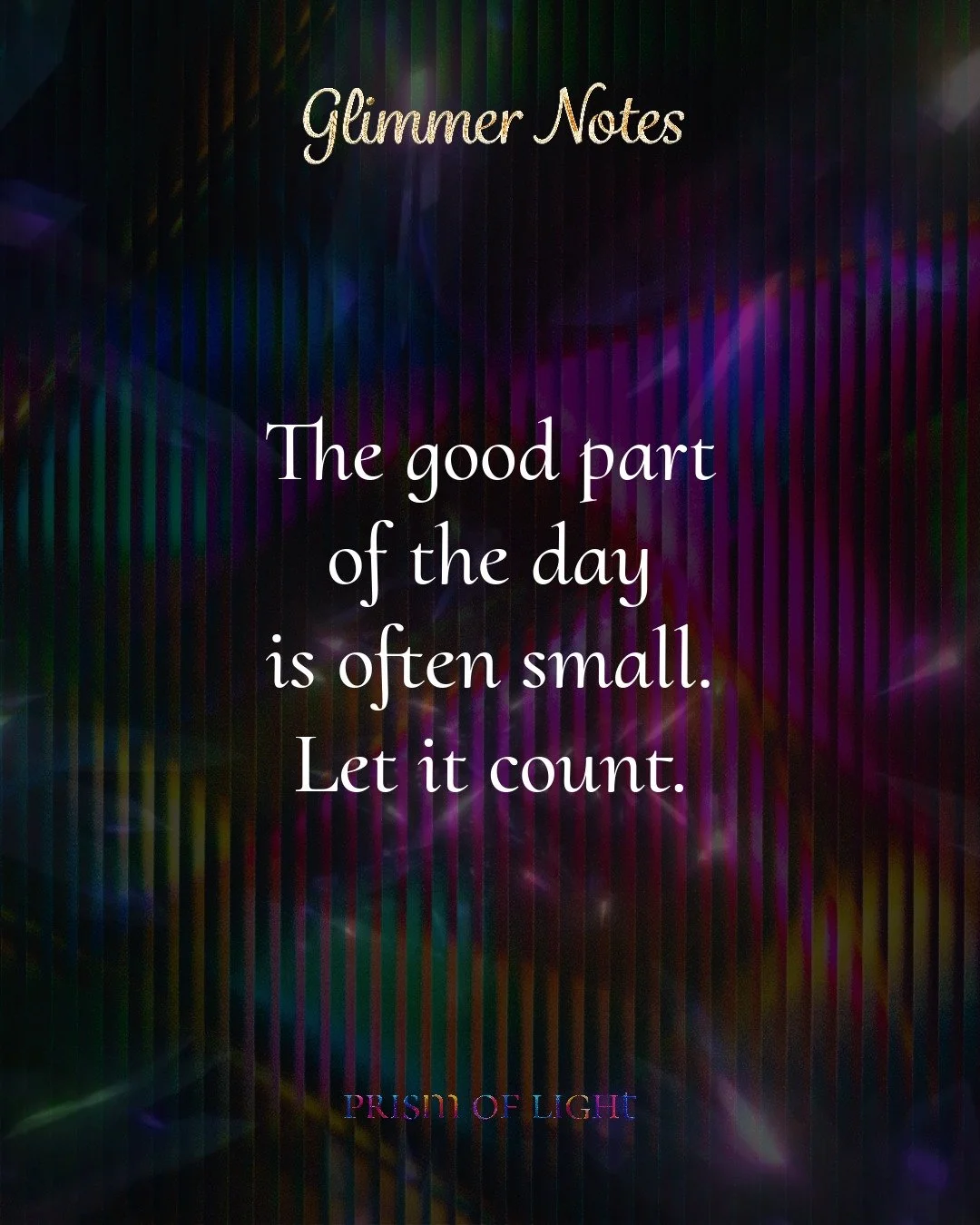
Prism of Light
Compose beautiful days brushed with a prism of light.
The Good Part of the Day
There’s usually a good part of the day hiding in plain sight.
Not a dramatic one — just a small easing.
A clean breath when you step outside.
A song you didn’t skip.
The way light lands on a wall.
Someone saying your name kindly.
A quiet minute where nothing asks you to be more than you are.
These moments don’t need to be earned.
They’re simply there, waiting to be noticed.
If one finds you today, let it be the good part.
Glimmer Notes
Glimmer Notes are small, prismatic reads for everyday life — longer reflections to return to when you want perspective, steadiness, or a little beauty to carry with you.
Small Joys Count
Some days are made of small joys —
a warm cup, a patch of color, a kind moment.
Even one glimmer can be enough for now.
The day doesn’t have to be big to be beautiful.
Sometimes it’s the ordinary things that soften us:
warmth in your hands, color where you didn’t expect it,
a simple kindness that lands quietly.
If a glimmer finds you today, let it count.
Awareness • Prevention • Healing
From Snake to Horse: A Year Turning Toward Healing
There are years that ask us to become still enough to hear ourselves.
And there are years that ask us to move — not away from what hurt us, but toward what helps us live.
The Chinese zodiac carries this rhythm beautifully.
The Snake and the Horse are neighbors in the cycle — a passage from inner transformation to outward renewal.
As we move from the Year of the Snake into the Year of the Horse, we are invited into a story of healing that begins in quiet wisdom… and continues into courageous motion.
The Snake Year — Healing Through Shedding
The Snake is a keeper of deep intuition.
In Chinese tradition, Snake years are linked with wisdom, strategy, and transformation.
Snakes heal in a way nature understands:
by shedding what no longer fits.
Not all growth is loud.
Sometimes healing looks like:
noticing what your body has been carrying
listening to the truth under the noise
letting old survival patterns loosen
allowing a new self to emerge, slowly and safely
The Snake reminds us that recovery is not a performance.
It’s a return — a quiet reintroduction to your inner voice.
Transformation can feel tender.
And change can be brave.
Snake medicine says:
“You are allowed to outgrow what happened to you.”
The Horse Year — Healing Through Forward Motion
Then comes the Horse.
Horse years symbolize energy, freedom, vitality, momentum, and confident movement.
After the shedding, there is breath.
After the inward work, there is the road.
Horse healing is not about rushing.
It’s about reclaiming motion on your own terms.
The Horse teaches:
your life belongs to you
your joy is not something you must earn
your body is not only where harm happened — it is also where strength lives
freedom can be practiced in small steps
hope can be rebuilt through movement, community, and choice
Horse energy isn’t denial of pain.
It is the decision to keep going while holding tenderness.
Horse medicine says:
“You are not trapped in the past. You are allowed to move forward.”
The Bridge Between Them — From Survival to Life
Snake year asks:
What must be released so healing can begin?
Horse year asks:
What becomes possible when you trust your life again?
Together they form a path many survivors know:
Awareness — naming what is true.
Prevention — building safety through insight and community care.
Healing — returning to movement, beauty, and connection.
This transition is not a switch.
It is a gentle crossing.
From the quiet courage of shedding…
to the brave joy of becoming.
Closing Invitation
If you are crossing into a new year carrying old pain,
know this:
Healing is not linear.
But it is real.
Some seasons teach us to shed.
Some seasons teach us to rise.
May the Snake bring you clarity.
May the Horse bring you freedom.
And may you move into the light one meaningful moment at a time.



